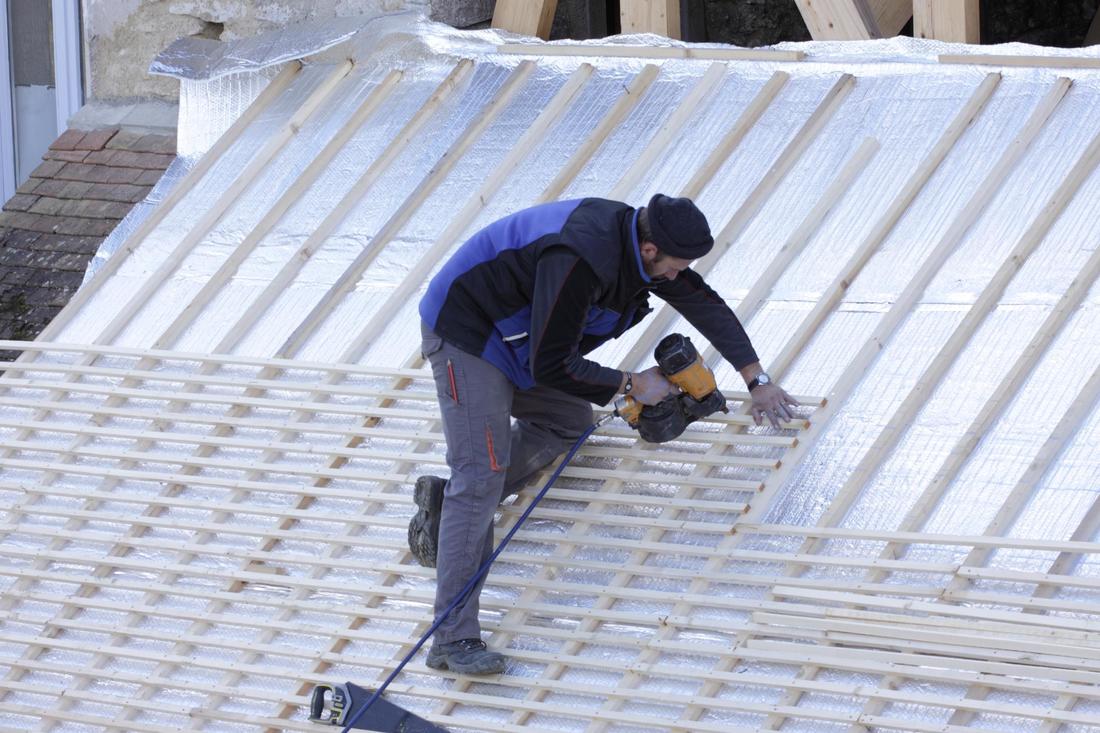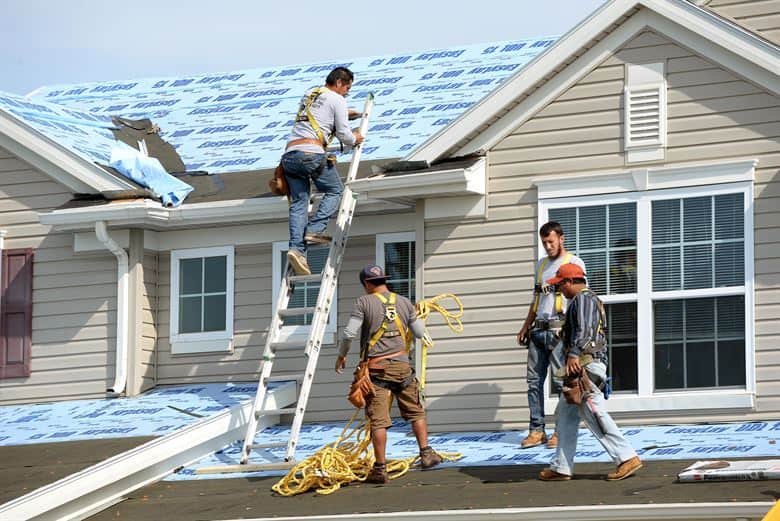Leading A&E Roofing Companies Queens: Expert and Reliable
Leading A&E Roofing Companies Queens: Expert and Reliable
Blog Article
Boost Your Home's Energy Performance With Professional Roof Services
From insulation to ventilation, every element of your roofing system can affect your home's energy usage. Take into consideration the implications of roofing shade, the advantages of proper upkeep, and the influence of roofing materials on your energy performance goals.
Relevance of Roof Insulation
Effective roof covering insulation dramatically contributes to maintaining a building's energy performance by reducing heat loss and reducing energy consumption. By developing an obstacle that stops warmth from escaping throughout the colder months and going into throughout the warmer months, roof covering insulation plays an essential duty in maintaining interior temperature levels. This stabilization results in a lowered dependence on home heating and cooling down systems, eventually reducing energy bills and lowering the general carbon impact of the structure.
Additionally, appropriate roofing insulation assists in stopping wetness build-up within the structure's framework. By producing a protective layer that hinders the development of condensation, insulation minimizes the threat of mold development, wood rot, and other forms of architectural damages triggered by excess moisture. This not only protects the integrity of the structure but likewise boosts interior air high quality, promoting a much healthier atmosphere for residents.
Basically, spending in high-quality roof covering insulation is an economical strategy that not just improves energy effectiveness but also adds to the long-term sustainability and comfort of a building.
Advantages of Appropriate Roof Covering Maintenance
Appropriate roof covering maintenance, as an essential complement to robust roof insulation, plays an essential duty in guaranteeing the lasting sturdiness and efficiency of a building's roof. Normal maintenance activities such as assessments, fixings, and cleaning assistance in recognizing and attending to problems before they intensify right into pricey troubles. By proactively maintaining the roofing system, home owners can expand its life-span, protecting against premature deterioration brought on by leakages, water damages, or architectural issues.
Among the essential advantages of correct roof maintenance is enhanced energy efficiency. A well-kept roof with undamaged seals and insulation makes certain that cooling and heating systems run extra successfully, lowering energy consumption and energy expenses. Additionally, by keeping the roofing system in great problem, building proprietors can prevent the requirement for major repair services or premature roofing system replacements, conserving both money and time over time.

Influence of Roof Color on Energy Effectiveness
The shade of a roofing system can dramatically affect its energy efficiency performance. Light-colored roofings, such as light or white grey, mirror more sunshine and warmth far from the building, decreasing the amount of heat absorbed right into the framework. A&E roofing contractors queens. This reflective home assists in preserving lower indoor temperature levels, especially during hot summertime, which can result in decreased reliance on cooling systems and reduced energy costs. On the various other hand, dark-colored roofs, like dark or black brownish, soak up even more warm, resulting in greater interior temperature levels and potentially increasing the need for cooling down systems.
In regions with mostly warm climates, choosing a light roof covering can add to significant power savings and boosted comfort inside. Nevertheless, in cooler climates, a dark-colored roofing may help in retaining more warm during the wintertime months. When choosing a roof shade for your home, consider aspects such as environment, energy effectiveness goals, and personal choices to make an informed decision that straightens with your particular demands.

Exactly How Roofing System Ventilation Impacts Energy Savings
Enhancing roof ventilation plays a crucial function in enhancing energy performance and decreasing overall cooling prices for buildings. Correct roof covering ventilation helps manage the temperature in the attic room room, stopping warm buildup during heat. By enabling hot air to run away and fresh air to flow, roof covering ventilation can significantly reduce the pressure on cooling systems, resulting in reduced energy consumption and energy bills.
Insufficient roofing system air flow can cause a range of corrugated tin problems that impact power cost savings. Without proper air movement, caught warm in the attic room can transfer right into the home below, creating the a/c system to function more challenging to maintain a comfy temperature. This increased work not only eats more power but likewise shortens the life expectancy of the cooling devices. Additionally, bad ventilation can add to moisture accumulation, which can lead to mold development and compromise the architectural integrity of the roofing.
Enhancing Effectiveness Via Roofing Materials
Choosing top quality roof products is important for optimizing power efficiency in buildings. The kind of roof covering product made use of can considerably affect the general power intake of a framework. For example, products with high solar reflectance and thermal emittance homes can help in reducing the heat taken in by the roofing, therefore decreasing the demand for too much air conditioning during heat.
One popular selection for energy-efficient roof is awesome roof materials, such as metal roofing systems or white membrane roof. These materials have the ability to reflect more sunshine and soak up less heat compared to traditional dark-colored roofs, leading to decreased power tin roof cost prices and enhanced indoor comfort. Additionally, products with high insulation residential or commercial properties, like spray foam roofing or protected metal panels, can enhance the structure's thermal efficiency, decreasing heat loss in the winter and warmth gain in the summertime.

Conclusion
In final thought, it is necessary to prioritize correct roof insulation, maintenance, shade option, ventilation, and materials to improve your home's energy effectiveness. These elements play a crucial role in minimizing power intake and costs, in addition to raising the total comfort and sustainability of your home. By buying specialist roof services, you can dramatically enhance the power performance of your home and add to a more eco-friendly way of life.
Take into consideration the effects of roofing system color, the benefits of appropriate upkeep, and the impact of roof materials on your energy efficiency goals.Effective roof insulation considerably contributes to maintaining a building's energy efficiency by reducing heat loss and decreasing energy consumption - A&E roofing contractor queens.Correct roofing upkeep, as a web vital complement to robust roofing system insulation, plays a pivotal role in making certain the lasting longevity and efficiency of a building's roofing system. Additionally, by maintaining the roof covering in good condition, residential or commercial property owners can stay clear of the need for significant repairs or premature roof covering replacements, saving both time and cash in the long run
Enhancing roofing system air flow plays a vital function in optimizing power effectiveness and reducing general cooling prices for buildings.
Report this page